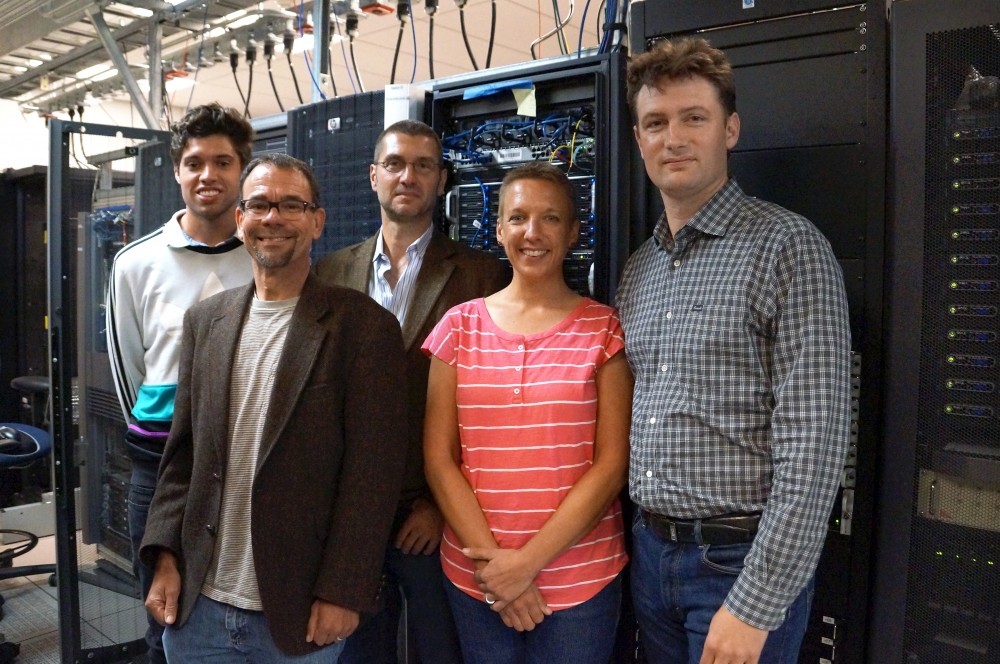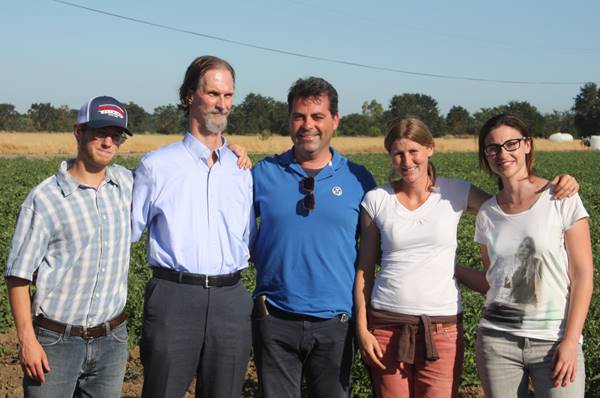From Data to Tomato
California is in the grip of the most serious drought in recorded history, and dwindling water supplies are a threat for everyone in the heavily populated state, from the hugely important agricultural industry to residential and commercial users. Uncertainties about availability of this precious resource have led to tension, uneven water rate-setting and general worries for the future.
At the same time, the drought has inspired novel research in the quest for solutions, some of which pit one of California’s other major industries — technology — against the scarcity of water.
The California Energy Commission has just funded one such solution, a project whose collaborators include UC Santa Barbara, UC Davis and agricultural sustainability tech startup PowWow Energy. The $2.3 million in funding could result not only in the optimization of agricultural water for the dry state, but also in energy efficiency. It has the potential to save 100 gigawatt-hours of energy during drought years.
“This was a proposal that really brought to the energy commission’s attention the linkage between water and power in California,” said Rich Wolski, professor of computer science at UCSB.
The campus’s Institute for Energy Efficiency is administering the grant and the Bren School of Environmental Science & Management is also participating in research.
“California’s ongoing, historic drought has raised awareness of how tightly our food and agricultural system is linked to the nexus of water, climate and energy systems,” said Tom Tomich, director of Agricultural Sustainability Institute at UC Davis. “This project gives us a chance to deepen our work at this exciting interface, which is of growing significance for California and the planet.”
In a nutshell, the project, led by PowWow Energy, seeks to convert huge amounts of data captured by smart meters installed in agricultural fields in the state into information that could assist in better decision-making in agriculture.
“It takes a lot of electricity to pump water out of these wells,” said Olivier Jerphagnon, PowWow Energy’s co-founder and chief executive officer. “And as there is little surface water allocation during the drought, the electrical draw on these wells becomes higher.” Additionally, according to Jerphagnon, higher electricity generation requires more water in power plants. It is a vicious circle.
UC Santa Barbara is involved primarily in the Big Data aspect of the operation. Under the direction of Wolski and Chandra Krintz, a professor of computer science, researchers, data scientists and agronomists will gather and manipulate data at the farm from various sensors.
“You may have weather data or aerial images from the web, or sensors out on the farm that measure the amount of water in the soil, or track the health of the plants,” Krintz said. “Bringing all that data to one place is part of our job.”
The data collected from field and farm will be kept private.
Seeds of this effort were planted a couple of years ago when Jerphagnon — an alumnus — and his team were developing their business during a sustainable agriculture-oriented capstone project at UC Santa Barbara supervised by Krintz.
PowWow Energy later won the National Grand Prize at the Cleantech Open in 2013 by deploying a software application in partnership with power utilities. Their first application used data from existing smart meters to keep farms aware of their water consumption via text messages, including leaks or abnormal pumping events that could indicate a falling water table or miscommunication in irrigation.
“The link between water usage and power consumption became clear when we talked to growers and power utilities,” said Jerphagnon. “We learned that there were opportunities to save more water and energy but that the data is fragmented. We did not know where to start to develop our second application.”
Another capstone project at UC Davis provided the answer last winter. Students supervised by Tomich interviewed dozens of progressive growers. They found that with the integration of various data sets and their conversion into simple answers on a smart phone to save on manual labor as well as partnerships with the UC Cooperative Extension for in-depth studies, farmers and growers were more likely to adopt irrigation best practices sooner than later.
“We’re going to be leveraging our experience gained with several crops toward proper irrigation scheduling, said Daniele Zaccaria, agricultural water management specialist at UC Agriculture and Natural Resources. Under the guidance of Zaccaria and his team, several area farms will be outfitted with sensors to capture data on water demand and their economic productivity that will be sent to PowWow’s cloud via the on-farm software gateway developed by UCSB. A demonstration plot to share the project with interested farmers will be housed at the Russell Ranch Sustainable Agriculture Facility at UC Davis, a long-term research facility studying the effects of different farming practices on some of California’s major crops.
This project will focus on several kinds of crops — alfalfa, almonds, pistachios and tomatoes — of which California is the country’s major producer. Overall, the new software-as-a-service will gather data over more than 1,600 acres.
The data gathered will be employed in two ways: to calibrate PowWow’s groundwater extraction algorithms to provide automated water records; and to develop an irrigation scheduler — a more challenging effort.
According to the researchers, a grower out in the field will receive notifications within a day, and make evidence-based decisions regarding farm management that can minimize or even eliminate risk. In addition, it will allow growers to save power, water, energy and even money without necessarily sacrificing the yield or quality of the given crop.
The need for funding from the California Energy Commission is best justified in the context of California water policy and history. Dating back 200 years, water rights disputes and politics have pitted farmers against urban users, municipal jurisdictions against the state, water districts against water users, conservation against construction, even conservationists against conservationists. All in one of the most intense farming regions of the world.
This project has the benefit of allowing everyone involved to know how much water is being consumed and at what energy cost, and will enable PowWow Energy to take a neutral position in terms of water policy. Roland Geyer, an associate professor from the Bren School of Environmental Science & Management, will lead the measurement and verification effort to review the water and energy savings.
Geyer has a long history of developing life-cycle-assessment models that provide insights in complex systems such as the transport and use of water in California. Geyer will collaborate with Robert Wilkinson, also a professor at the Bren School, to develop a model to estimate the energy intensity of ground water and surface water so energy efficiency can be understood in wetter years.
Relying on accurate data related to water and energy usage at the farm will help growers and farm managers determine the appropriate balance between applied water and crop production under varying climate conditions, water costs and energy prices.
“This grant is especially significant as it directly addresses the urgent need to conserve both water and energy and to limit greenhouse gas emissions,” said David Auston, executive director of the Institute for Energy Efficiency. “As an example of the water-energy nexus, it directly supports the goals articulated by both Governor Brown and UC President Napolitano. The Institute for Energy Efficiency is proud to be a partner with PowWow Energy in this innovative project.”





